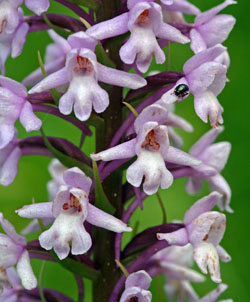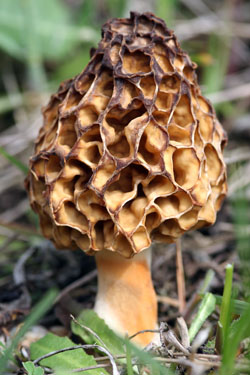
|
KĄTY (PLH060010)
Ostoja Kąty PLH060010, with an area of 24 ha, was established to protect the slopes of a hill known as Wieprzecka Góra (287 m a.s.l.) surrounded by farm fields between the villages of Kąty II and Wychody. The rise is located in the Zamojski Padół meso-region of the Lublin Upland. It is administered by the township of Zamość (Zamojski County). Due to the presence of rare plant species, a natural monument was established here of 1.97 ha. Unfortunately, plans to create the Wieprzecka Góra Nature Reserve have not been realized.
This area is dominated by floristic xerothermic grasslands with significant stands of orchids. With its 26 species on the list of plants under legal protection, Kąty is probably the most valuable of these types of sites in Poland. Six of the species found here are listed in the Polish Red Data Book of Plants. Numerous individuals can be found here of: Anemone sylvestris, Aster amellus, Linum flavum, Platanthera chlorantha, Gentianella lutescens and others. Several species lacking protection that are worth mentioning include: Astragalus onobrychis, Trifolium rubens and Peucedanum alsaticum, with one of its largest populations at this site in the country.
The vertebrate fauna of Kąty is relatively poorly known. Among the invertebrates found here, attention is drawn to the rare and protected butterfly species of Colias myrmidone and Papilio machaon. With the appropriate rainfall in spring, the showy sporocarps of the mushroom Morchella esculenta can be found in the grasslands and along roadsides.
The southern slopes of Wieprzecka Góra were used in the past for agricultural purposes. Today they are being overgrown by young xerothermic species. Some fragments of the slopes are burned. The northern and northwestern exposed slopes are in large part overgrown with young pines and blackthorn. Given such unfavorable conditions, the plants requiring exposure to direct sunlight are disappearing. Another threat is the widespread incursion of humans who pick or dig up decorative species of plants. Some grassland fragments are also plowed or littered with trash. Protection of this site is made difficult by the complicated ownership structure of this land.
     
|

|


|







